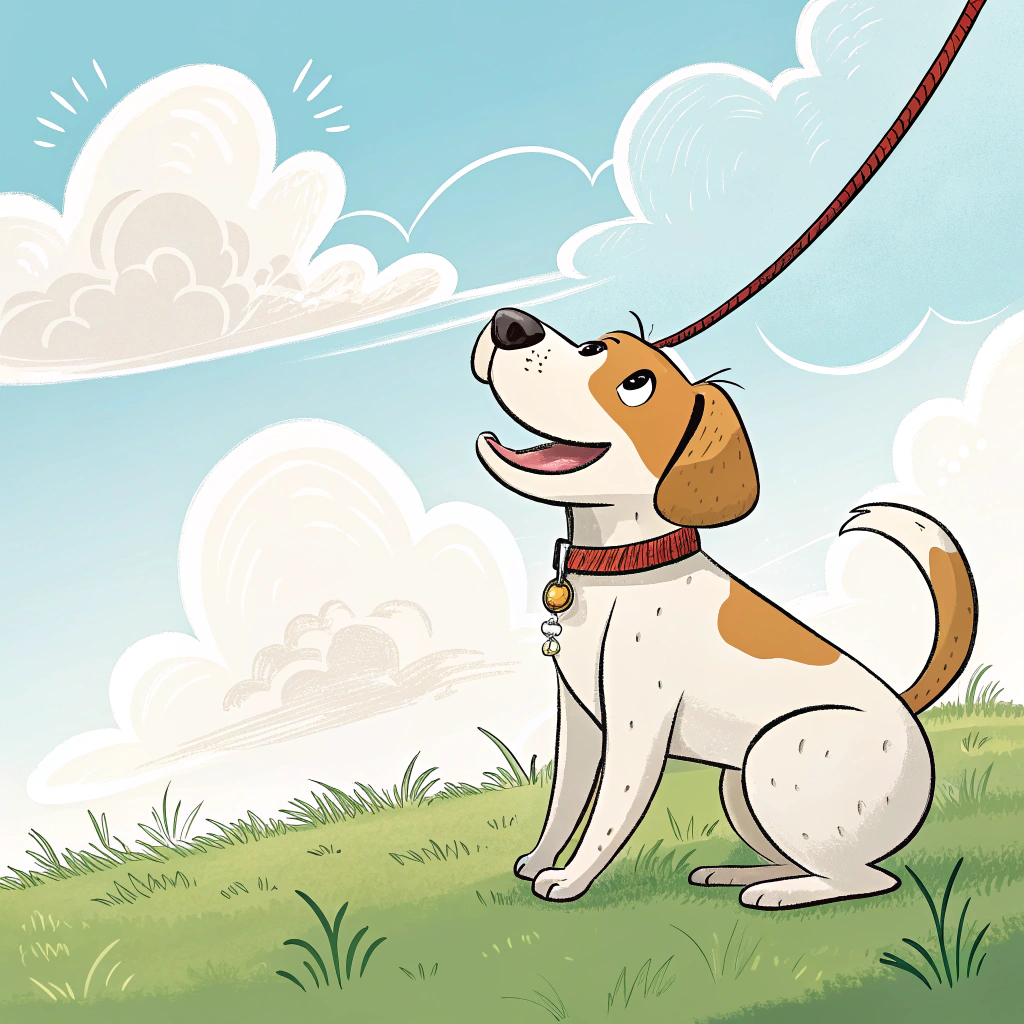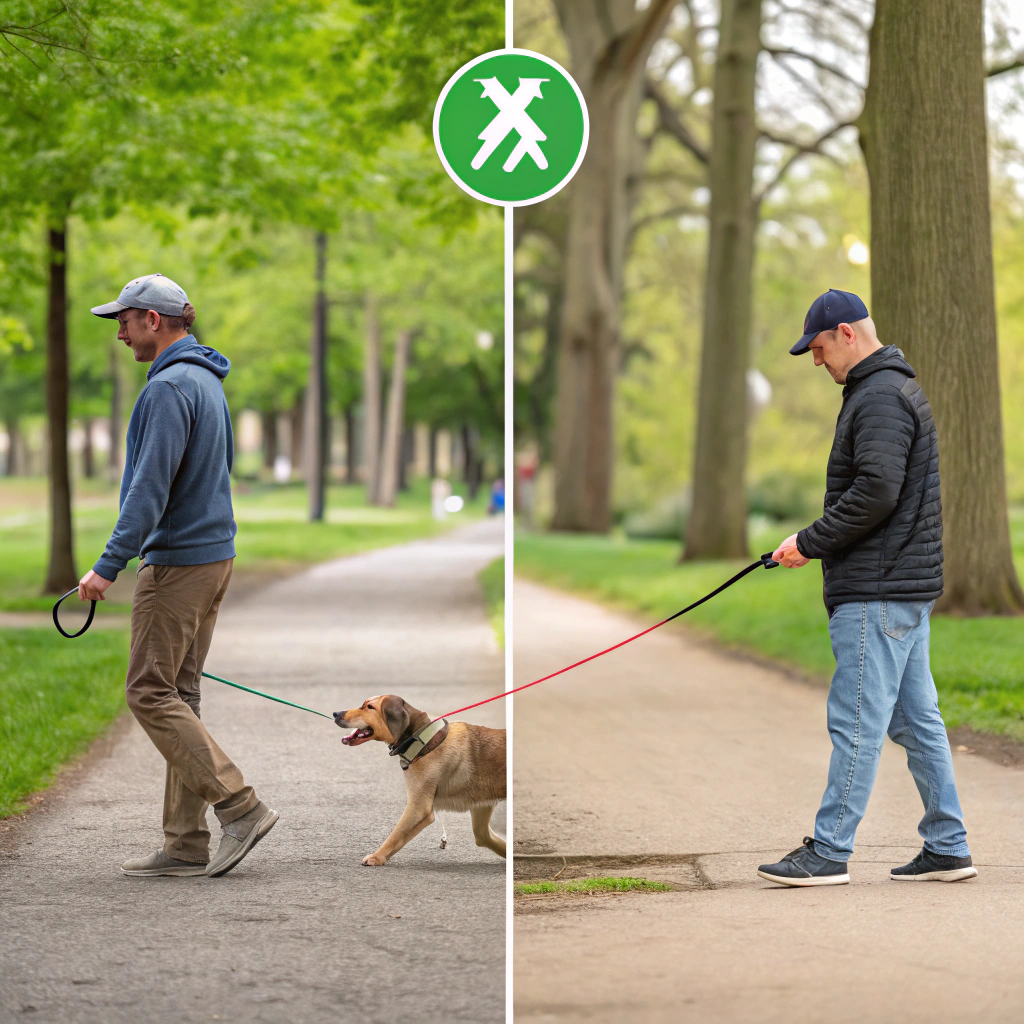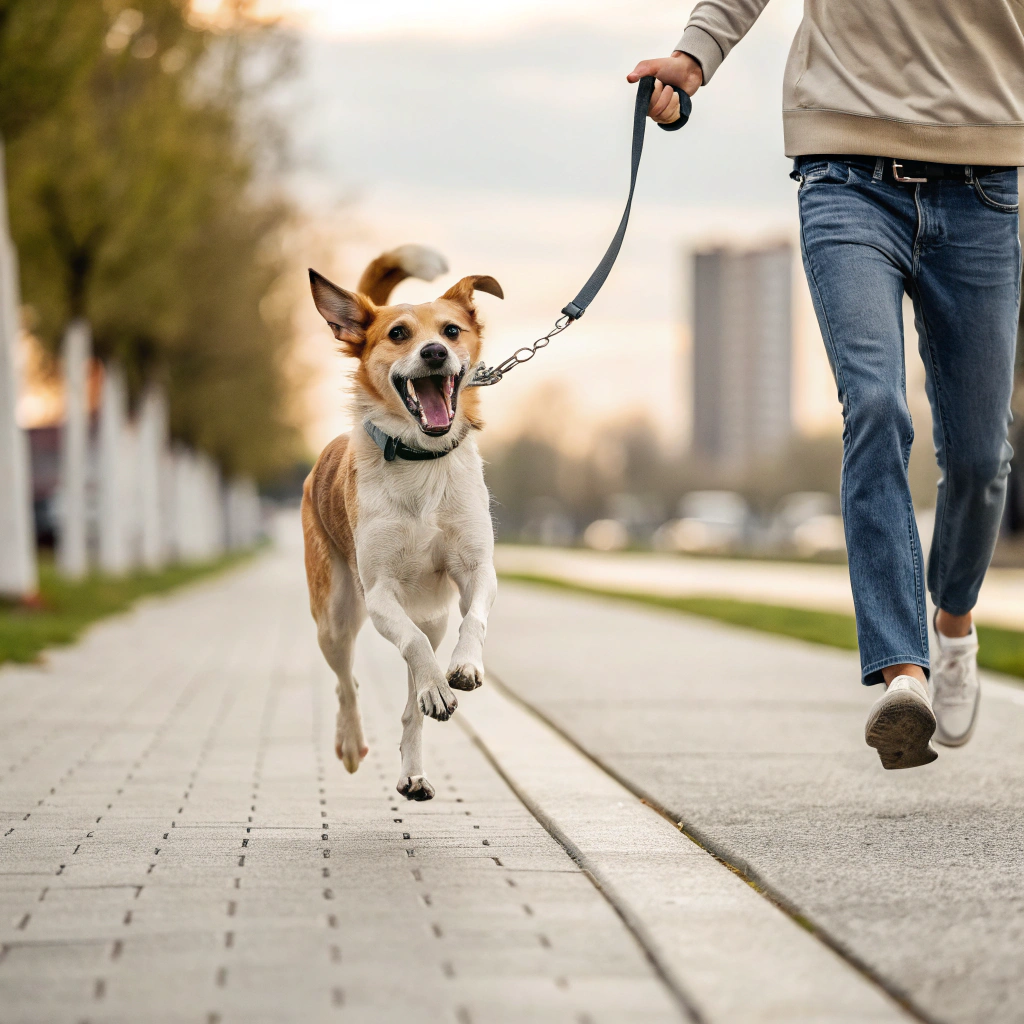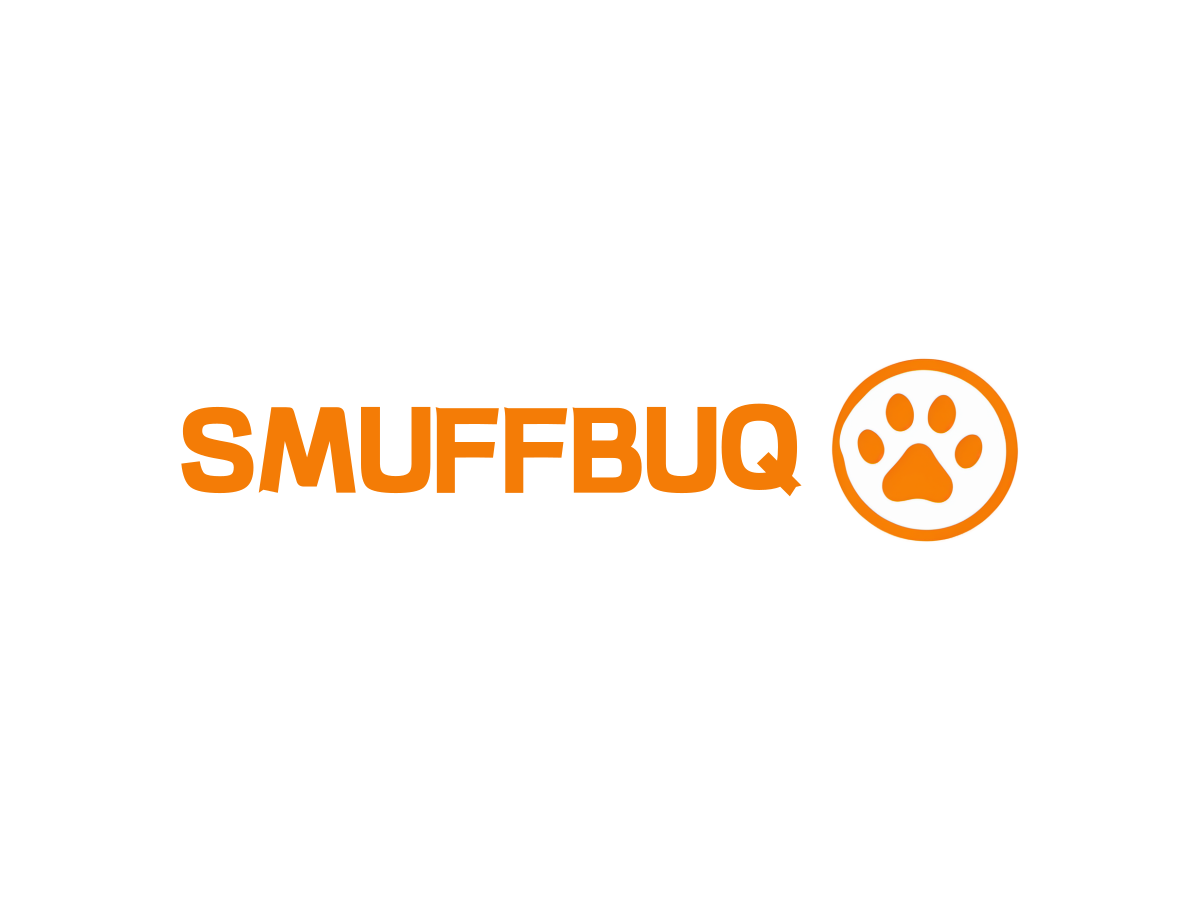Are dog leashes cruel?
Many new dog owners worry they’re restricting their pet’s freedom when using a leash. They see their dog pulling or looking longingly at open spaces and feel guilty about holding them back.
**Dog leashes are not cruel when used properly – they’re essential safety tools that protect dogs from traffic, dangerous animals, and getting lost. When fitted correctly and paired with positive training, leashes provide dogs with safe freedom while When fitted correctly and paired with positive training, leashes provide dogs with safe freedom1 while preventing accidents and conflicts with other animals or people

I’ve been walking dogs for over fifteen years, and I’ve seen firsthand how proper leash use actually gives dogs more freedom to safely explore the world. Let’s examine the common concerns about leashes and separate fact from fiction to understand their true role in Let’s examine the common concerns about leashes1 and separate fact from fiction to understand their true role in responsible dog ownership.
Do dog leashes hurt dogs?
The sight of a dog pulling against its leash, gasping or coughing, raises legitimate concerns. No loving owner wants to cause their pet discomfort or pain.
Properly used leashes don’t hurt dogs. However, incorrect equipment (like choke chains), poor fit, or improper handling can cause discomfort or injury. Collars can damage the Collars can damage the trachea when dogs pull, which is why harnesses1 are often better for pullers, distributing pressure across the chest rather than concentrating it on the neck

I learned this lesson the hard way with my first dog, a strong-willed Husky mix. I initially used a standard collar, and his persistent pulling led to concerning coughing fits. After consulting with my veterinarian, I switched to a front-clip harness that distributed pressure across his chest. The difference was immediate – he was more comfortable, and the pulling reduced significantly.
The potential for discomfort or injury depends largely on the equipment used and how it’s fitted. Here’s what I’ve learned about different leash and collar combinations:
Impact of Different Restraint Systems on Dog Comfort
| Type | Potential Issues | Best For | Not Recommended For |
|---|---|---|---|
| Standard collar with leash | Can damage trachea when pulled; pressure on thyroid | Trained dogs that don’t pull | Pullers, brachycephalic breeds, small dogs |
| Front-clip harness with leash | Minimal issues; may restrict shoulder movement slightly | Most dogs, especially pullers | Dogs with specific shoulder injuries |
| Back-clip harness with leash | Can encourage pulling through "opposition reflex" | Dogs with neck issues, trained non-pullers | Untrained dogs that pull strongly |
| Head halter with leash | Can cause neck strain if jerked; some dogs find it uncomfortable | Strong pullers with proper introduction | Sudden jerking movements; without proper acclimation |
| Slip/choke collars | Can cause tracheal damage, bruising | Limited training scenarios with professional guidance1 |
The truth is that many leash-related injuries come not from the leash itself but from improper use or poor equipment choices. After working with dozens of dogs over the years, I’ve found that most leash discomfort issues can be resolved with three simple steps:
-
Proper equipment selection: Choose gear appropriate for your dog’s size, strength, and behavior. For most dogs, a properly fitted harness is more comfortable than a collar for leash walking.
-
Correct fitting: Even the best equipment causes problems if fitted improperly. Follow sizing guides carefully and check regularly for signs of rubbing or discomfort.
-
Training: A well-trained dog who walks without pulling rarely experiences leash discomfort. Basic loose-leash walking training benefits both dog and owner.
One often overlooked aspect is the psychological impact of restrictive equipment. Aversive tools like prong collars or shock collars might stop pulling through pain or fear, but they can create negative associations with walking or other dogs. I always recommend positive reinforcement methods that teach dogs to enjoy walking calmly without resorting to discomfort.
When properly selected, fitted, and used, leashes and their attachments should not cause pain or distress. If your dog seems uncomfortable during walks, it’s worth consulting with a professional trainer or veterinarian to find a more suitable solution.
Is it good to walk a dog without a leash?
The image of a dog running freely through a field, joyfully exploring without constraints, appeals to many dog owners. We want our dogs to experience that freedom, leading many to question whether leash-free is the way to go.
Walking a dog without a leash is only appropriate in secure, designated off-leash areas with a dog that has excellent recall skills. In most public spaces, leash-free walking endangers the dog through traffic, wildlife encounters, and conflicts with other dogs, while potentially violating local leash laws and infringing on other people’s comfort and safety.

I’ve experienced both sides of this issue. My Border Collie has impeccable recall, and we enjoy off-leash hikes in permitted areas. However, I once made the mistake of briefly unleashing my rescue dog in an unauthorized area, believing no one was around. Within seconds, he spotted a squirrel and took off, nearly reaching a busy street before I could catch him. That terrifying moment taught me why leash laws exist.
The safety concerns around off-leash walking are significant and multifaceted:
Risks of Off-Leash Walking in Undesignated Areas
| Risk Category | Specific Dangers | Potential Consequences |
|---|---|---|
| Traffic | Cars, bicycles, skateboarders | Serious injury or death from collisions |
| Wildlife | Predators, prey animals, toxic plants/substances | Injury from wildlife encounters, poisoning, getting lost |
| Other Dogs | Aggressive dogs, fearful dogs, dogs on leash | Dog fights, injury to your dog or others |
| People | Fearful individuals, children, delivery personnel | Bites, liability issues, reinforcing cynophobia |
| Legal | Leash laws, trespassing issues | Fines, legal liability for damages or injuries |
| Training Setbacks | Practicing selective listening | Deterioration of recall and other obedience skills |
Beyond these risks, there’s also the matter of respect for others. Many people fear dogs or have had negative experiences with them. Children may not know how to safely interact with dogs, and other dog owners may have leashed dogs that are reactive or in training. Allowing your dog off-leash in public spaces can force unwanted interactions on others.
That said, I firmly believe dogs benefit greatly from safe off-leash experiences in appropriate settings. These include:
- Designated off-leash dog parks with secure fencing
- Private, securely fenced yards
- Designated off-leash hiking trails (where explicitly permitted)
- Professional training facilities with controlled environments
- Certain beaches with off-leash hours (where posted)
For a dog to safely enjoy off-leash privileges in these appropriate areas, they need:
- Rock-solid recall that works even with distractions
- Good social skills with both dogs and people
- Basic obedience commands like stay, leave it, and come
- No prey drive that overrides training
- Clear understanding of boundaries and permissions
I’ve found that using a long-line (a 15-30 foot training leash) in open, uncrowded areas can provide a middle ground. It gives dogs more freedom to explore while maintaining ultimate control. This can be an excellent stepping stone while building reliable recall skills.
Remember that even the best-trained dogs can have moments of selective deafness when sufficiently motivated by prey, fear, or excitement. The leash is ultimately a safety backup for those unpredictable moments when instinct might override training.
Do dogs care about being on a leash?
Many owners project human feelings onto their dogs, assuming they must feel restricted or unhappy when leashed. The forlorn look from your dog might make you wonder if the leash is ruining their happiness.
Dogs generally don’t have negative feelings about properly introduced leashes. While some may initially resist the sensation, most quickly adapt and even get excited seeing a leash because it signals walks and adventures. Negative leash associations usually stem from poor introduction, discomfort, or frustrating experiences like pulling, not from the leash concept itself.

When I first adopted my rescue dog, he cowered at the sight of his leash. His previous owners had likely yanked him or used the leash as punishment. Through patient, positive association—connecting the leash with treats, praise, and Through patient, positive association1—connecting the leash with treats, praise, and enjoyable walks—his perspective completely transformed
Dogs’ reactions to leashes vary widely based on their experiences, training, and individual temperament:
Common Dog Reactions to Leashes and Their Causes
| Reaction | Possible Causes | How to Address |
|---|---|---|
| Excitement | Positive association with walks and adventures | Reinforce calm behavior before attaching leash |
| Resistance/Freezing | Negative past experiences, lack of proper introduction | Gradual desensitization with positive reinforcement |
| Mouthing the leash | Playfulness, attempt to control the walk, frustration | Teach "leave it," provide appropriate toys for the walk |
| Pulling | Natural dog walking pace is faster than humans | Loose leash walking training, front-clip harness |
| Leash reactivity | Frustration at restricted greetings, fear, prior negative encounters | Behavior modification, maintain distance from triggers |
From a dog’s perspective, the leash itself is simply an object—it’s the associations and experiences connected to it that shape their feelings. Dogs live in the moment and form associations based on consequences. If the leash predicts good things (walks, exploration, positive interactions), they’ll view it positively. If it predicts discomfort, frustration, or punishment, they’ll develop negative associations.
The key is proper introduction and positive experiences. I’ve found these approaches particularly effective:
-
Proper leash introduction: For puppies or dogs new to leashes, create positive associations by pairing the leash with treats and praise before even attaching it.
-
Comfortable equipment: Ensure the leash attachment (collar or harness) fits properly and doesn’t cause discomfort.
-
Freedom within limits: Use a technique I call "structured freedom"—allowing the dog to sniff and explore within the leash’s range rather than forcing a heel position constantly.
-
Consistency in expectations: Dogs thrive on clear, consistent rules. Decide your leash walking expectations and be consistent.
-
Positive reinforcement: Reward desired leash behavior rather than punishing unwanted behavior.
Most dogs quickly learn that the leash is the gateway to exciting experiences and outdoor adventures. Rather than seeing it as a restriction, they often view it as a connection to their human and a signal that good things are about to happen. My own dogs now bring me their leashes or sit by the hook where they hang when they’re ready for a walk!
For dogs with established negative leash associations, behavior modification with a certified trainer can help reshape those feelings. With patience and consistent positive experiences, even dogs with leash anxiety or reactivity can learn to accept and even enjoy leashed walks.
Conclusion
Leashes are not cruel when used properly—they’re safety tools that protect dogs from potential dangers while allowing them to safely explore the world. With correct equipment, positive training, and appropriate off-leash opportunities in safe areas, leashes enhance rather than detract from a dog’s quality of life.

